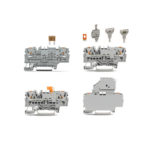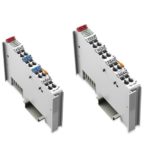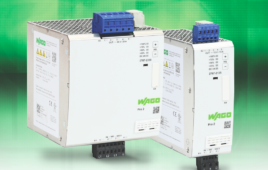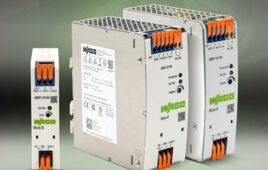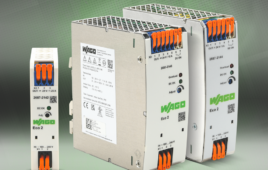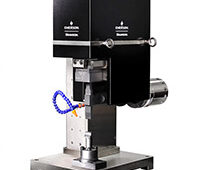Backup power systems provide crucial emergency power to critical components whenever there’s a failure in a facility’s main power supply. These backup systems are indispensable at facilities involved in essential life-saving services, automated manufacturing of expensive product, and other critical operations where they help protect vital equipment and prevent expensive downtime, data loss, and time-consuming restart cycles.
Backup power systems go into action during power outages or blackouts involving the total loss of utility electricity at the point of generation or transmission. They can also go into action during brownouts — those undervoltage situations (whether intentionally induced for safety or an accidental condition) that last from minutes to hours. Under such conditions, power supplies without backup power are likely to malfunction.

The main elements of backup power supplies
Backup power systems comprise three main components — an uninterruptible power supply or UPS, a battery, and a battery charger. The UPS serves to detect losses in the main power supply and switch the system to work off the backup battery. The battery of course provides the backup power … and the battery charger charges the battery when line power is live. These components are sometimes built into a fully integrated module (all in one housing) or sold as separate individual components. Battery and battery-charger functions include the following …
Stable output voltage: A UPS must supply stable voltage to all connected loads over the entire blackout or (if functioning as a power-leveling system) the entire required buffer time. Voltage must also remain stable throughout the cycle — so for example, a 24-Vdc battery must supply power at 24 Vdc whether the battery is full and almost fully discharged.
Energy efficiency: Efficient battery charging modes are essential, as they save energy and prolong the battery life.
Parallel and serial connectivity: Some applications necessitate the connection of many backup batteries to meet the power requirements of critical connected loads. Batteries in such arrangements may connect in either parallel or series — requiring batteries that function in both configurations.
Battery charger smart charging modes: Battery chargers (especially those that are DIN rail mountable) feature battery-charging as well as electrical-safety features. Smart charging and power management features ensures batteries are always charged through optimized routines sans overcharging or undercharging. When such chargers detect a drop in battery power that passes a certain threshold, it automatically begins a charging sequence. As soon as the battery is full, the charger detects that state as well — and stops supplying current. Some variations of smart charging is designed to deliver efficient charging that’s also quick.
Charger monitoring and diagnostics: These features continually monitor attached batteries and provide realtime diagnostics. When combined with smart charging modes, they also exponentially increase battery life. Most charger modules feature LED indicator lights that convey system status and any problems. Typical information communicated by the LEDs includes the presence of an overload condition, the need to replace a battery, and the expiry of a buffer time. LEDs can also indicate battery status — whether ready for use, charging, or buffering.
Battery protection: Battery chargers (especially those that are DIN rail-mounted) include features that protect batteries and connected components from electrical power problems such as surges, blackouts, brownouts, overvoltage, undervoltage, frequency variations, harmonic distortions, and line noise. Most of these problems may occur in only ac — so in fact, protective features are more vital in ac chargers. Battery chargers can also protect batteries by preventing short-circuit overloads and reverse battery charging.
Wide input voltages: Advanced battery modules can operate with myriad input voltages while supplying power at one specified output voltage. This is most useful where a battery charger complements a given machine or design that’s sold globally — so expected to see various input power types.
Adjustable buffer time: The buffer time indicates how long a UPS will continually supply power before a controlled shutdown. UPSs featuring adjustable buffer times let plant personnel manually set the buffer time … useful when the exact time it will take to restore the main power is known. Adjustable buffer times are also useful when a machine needs a controlled shutdown rather than continuous battery-powered operation in the event of a power failure. Adjustable buffer times make for fast recharging, as the battery only needs to be recharged for the small amount it was required to discharge. The buffer-time value on many UPS modules can be set from 10 sec to unlimited.
Compatibility with various batteries: Standalone battery chargers may be required to safely pair with various batteries. Complicating matters is how there are hundreds of standalone UPS battery types on the market having various ratings and specifications. Wider compatibility saves engineers the hassle of hunting for batteries that match the charger’s specifications.
Mounting: The most common DIN rail-mounted battery chargers in industrial settings serve in multicomponent circuits. These chargers must be electrically connected — and of course fit in designated spaces that are often quite tight. This duo of requirements makes battery-charger mounting geometry important. DIN rail-mounted battery chargers lead for quick and secure installation near the components they serve.
⚙️ Contribution by Etiido Uko • Mechanical engineer
You may also like:
Filed Under: Batteries, Power supplies



